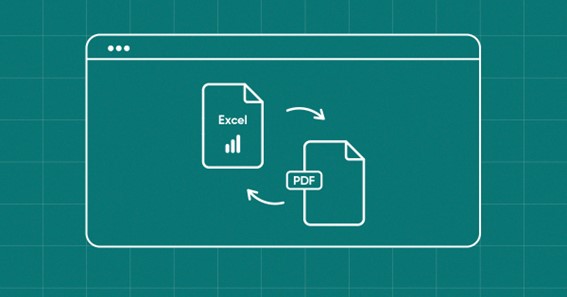Spreadsheets are an essential component of many business processes, allowing users to quickly and easily organize, store, and analyze data. But when it comes to sharing spreadsheets with colleagues or clients, it is often necessary to convert the file into a PDF. This is because PDFs are more secure and accessible than spreadsheets, meaning the data is more protected and the document can be read by almost anyone. In this blog post, we will explore the pros and cons of converting your spreadsheets to PDFs, so you can make an informed decision on how best to share your data. If you want to convert PDF to Word document, you can use a PDF converter tool. These tools allow you to easily transform PDFs into editable Word documents.
We will look at the ease of use, security features, and potential drawbacks of converting your spreadsheets to PDFs, so you can make sure your data remains safe and secure and can be shared with anyone.
Click here – Three Tips To Start A Business In The Sport Industry
- Pros of Converting to PDF
Converting a spreadsheet from Excel to PDF comes with a plethora of benefits, especially when sharing documents with colleagues and clients. One of the most obvious benefits of converting to PDF is that it preserves the contents of the document exactly as you intended them, meaning that formatting and formulas are maintained. Additionally, PDFs are incredibly difficult to edit, which makes them ideal for sharing sensitive or confidential information. By converting your Excel documents into PDFs, you can be sure that all of your data will remain secure and untouched.
Visit here to know about biggest data.
- Cons of Converting to PDF
Converting Excel documents to PDF is a great way to make sure your data is secure and can’t be tampered with, but there are some drawbacks to this process. Firstly, converting Excel documents to PDFs can be time-consuming since it’s necessary to convert each sheet individually. Secondly, PDFs don’t support features like sorting, filtering, and pivot tables, which are essential in Excel. Finally, PDFs aren’t as easily editable as Excel documents, so if you need to make changes to the data, it can be a major hassle. Therefore, it’s important to weigh the pros and cons before making a decision whether to convert your spreadsheets to PDF.
- How to Convert Excel to PDF
Converting your Excel spreadsheets to PDF is a great way to preserve their content and formatting, while still allowing you to share them with others. The process is simple and straightforward, and can be done in just a few steps: first, open the Excel file you want to convert, then click the “Save As” button and select “PDF” as the file type. Finally, click “Save” and you’re done! Your Excel file has now been converted to a PDF, and is ready to be shared with anyone you choose. The main advantage of converting your spreadsheets to PDF is that the format is widely accepted, and the content is preserved in a format that is difficult to edit. Plus, you don’t have to worry about any compatibility issues, since almost any device can open a PDF file.
Click here – Shockwave Therapy For Treating Chronic Low Back Pain
- Benefits of Converting to PDF
Converting Excel spreadsheets to PDFs is a great way to preserve the integrity and accuracy of your data. PDFs are much easier to archive, secure, and share than Excel files. And since PDFs are universal, they can be opened on any device, regardless of its operating system or software. Here are four key benefits of converting your spreadsheets to PDFs:
- Improved accuracy and reliability: PDFs are designed to preserve the layout and formatting of the original document, so you can be sure your data is accurate and can be relied upon.
- Enhanced security: PDFs are difficult to alter, so your sensitive data is better protected from unauthorized changes.
- Increased portability: PDFs can easily be shared without worry about compatibility issues.
- Reduced file size: PDFs are much smaller in size than Excel files, making it easier to store and transfer them.
- Drawbacks of Converting to PDF
When it comes to converting spreadsheets from Excel to PDF, there are both advantages and disadvantages to consider. One of the biggest drawbacks of converting to PDF is the loss of functionality. PDF documents are not as editable as Excel documents, meaning you cannot easily add and subtract rows, columns, and cells. Additionally, complex formulas and functions may not survive the conversion process, which can lead to inaccurate results. Additionally, PDF files are much larger than Excel files, so they can take up more storage space and require more time to upload and download. Finally, PDFs are not as secure as Excel documents, which means confidential information can be easily accessed by those without the correct permissions.
In conclusion, converting Excel to PDF has its advantages and disadvantages. While it may be a convenient way to share spreadsheets with others, it can also lead to unintended consequences if data aren’t properly secured. That said, Excel to PDF conversion is an increasingly popular solution for businesses that need to share data in a secure and easy to view format. With the right precautions, you can make the most of this useful feature.
